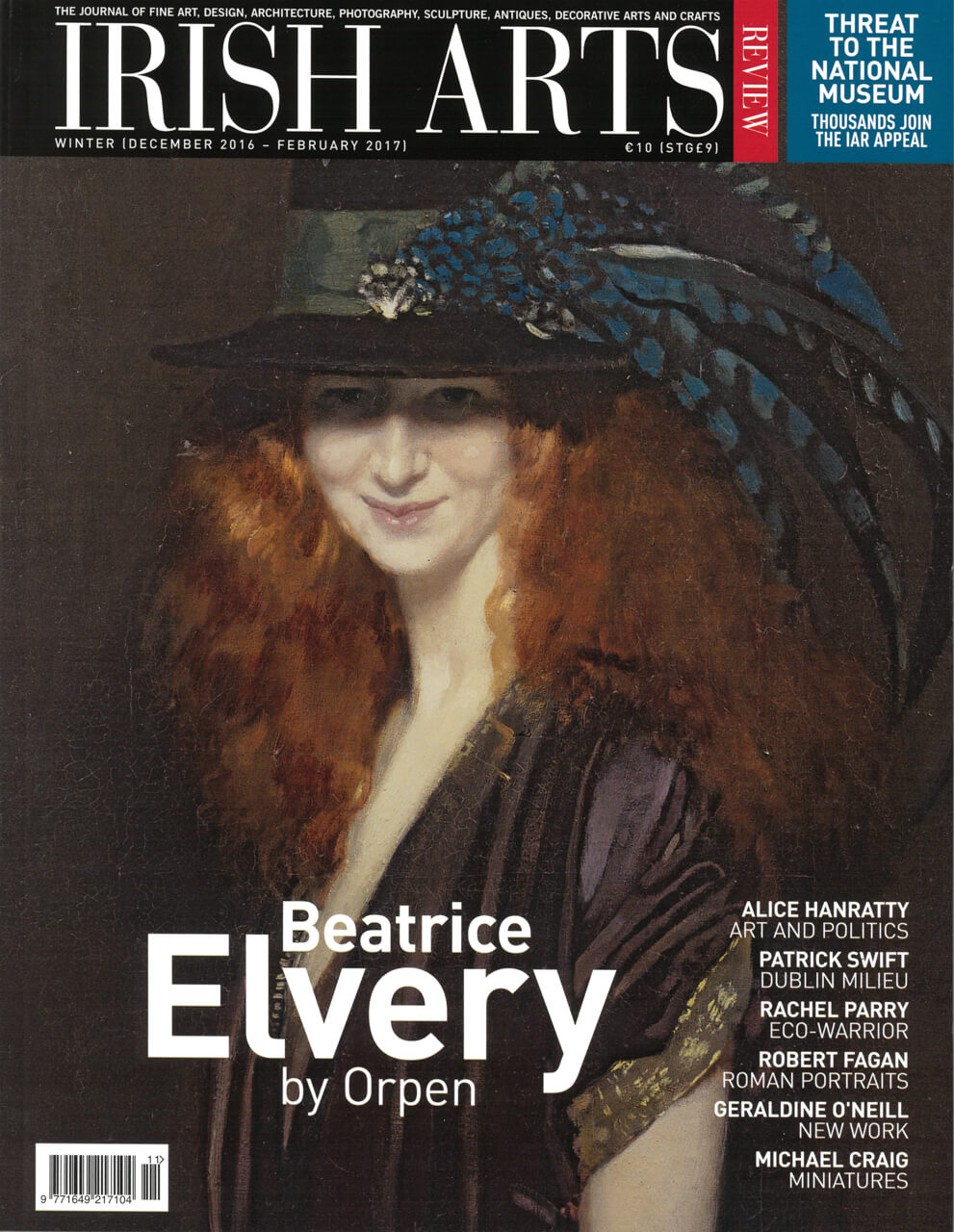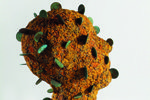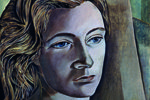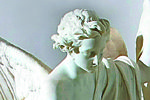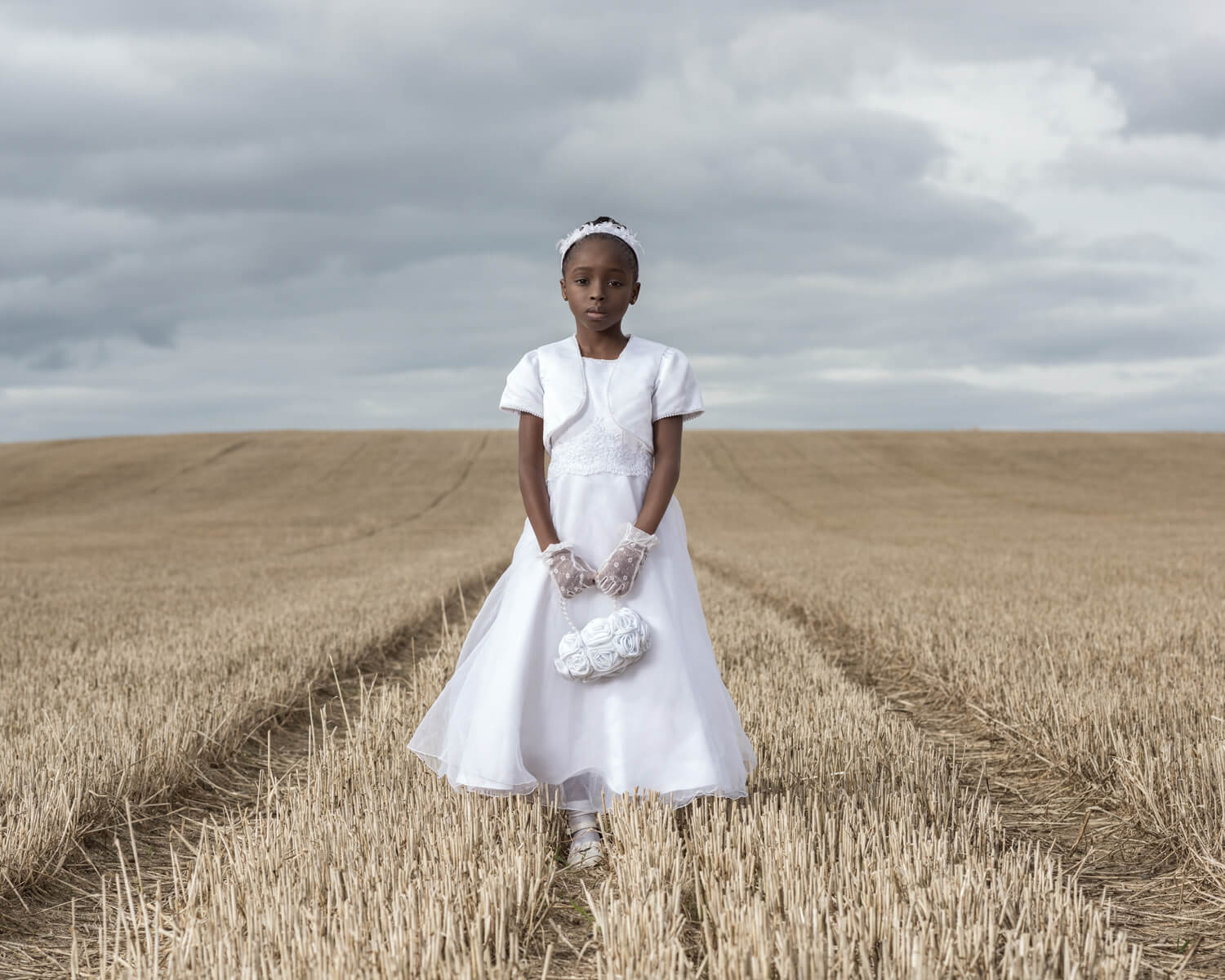
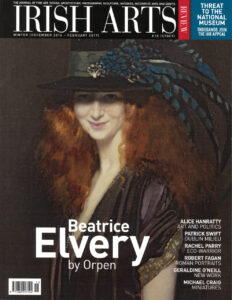
Kim Haughton’s portraits, on view now at the National Museum Collins Barracks, reflect on Ireland’s multi-layered society at the end of the first century of this nation state, writes Stephanie McBride
Award-winning photojournalist Kim Haughton is noted for her work with NGOs on issues of developing countries (Fig 2). Originally from Dublin and a graduate of Dublin Institute of Technology and London’s University of the Arts, she is now based in New York. Her work has appeared in such diverse international publications as Time, Vanity Fair, The Financial Times and Business Week. The Guardian featured an image of horses outside an empty house on a ghost estate from her ‘Shadowlands’ documentary series as emblematic of the Celtic Tiger’s collapse in 2007.
‘In Plain Sight’, Haughton’s compelling and troubling exhibition on the legacy of child abuse in Ireland, was shown at the Gallery of Photography in 2015. Combining landscape and portrait photography, the quietly charged images confronted official Ireland’s silence and inaction and explored new directions in photojournalism and visual storytelling.
Her current project ‘Portrait of a Century’ is an ambitious undertaking: 100 portraits of Irish subjects, drawn from sport, arts, and the political sphere, each born on a different year. The series begins with economist and former public servant TK Whittaker (born in 1916) and ends with more recent arrivals born in this decade. While many of these youngest subjects have a lifetime ahead of them and have not (yet) tasted fame, most of the adult subjects are well-known names in Ireland.
Haughton likes ‘the one-to-one nature of portraiture’ and she shows a distinctive approach to her various subjects, with carefully composed images that avoid cliché and mediocre uniformity
At the best of times this would present a challenge for the photographer to refresh and startle expectations. Images of famous personalities saturate today’s celebrity-driven culture. Paradoxically, this image excess leads to a glut of blandness, a sameness as all the previous images of a well-known figure fade into the latest ones. In addition, portraiture itself is a demanding genre; it strives for a subtle intimacy and co-operation with the sitter, and a certain degree of authorship by the subject in turn, in order to convey a sense of authenticity. Haughton says she likes ‘the one-to-one nature of portraiture’ and she shows a distinctive approach to her various subjects, with carefully composed images that avoid cliché and mediocre uniformity.
In several images Haughton eschews any props and chooses a head-and-shoulders shot instead, as in her portrait of Desmond Guinness (Fig 3). The classic close-up is powerfully engaging, as her subject unflinching in the eye of the camera – looks back at the spectator in the visual equivalent of a firm handshake. A wide-shot, by contrast, positions Colum McCann in his brightly-lit writer’s den, framed by a formidably-solid lectern, bookmark and a collection of books that bait our curiosity as to the titles (Fig 9).
In another interior setting, singer Johnny Logan sits centre-stage in his world of musical instruments, awards and memorabilia of a long career, his hands clasped, a smile just below the surface (Fig 1). Yet there is a reflexive twist to the composition, which is framed to include a soulful image of Logan’s younger self, in contrast to his direct address and his surrender to the lens.
Cables, ladders and bars create several planes to give a suitably 3D resonance to an image of Rowan Gillespie. Portrayed in gentle, pale tones, he is at home and at ease in his workshop with some of his monumental sculptures (Fig 4).
But Haughton’s portraits are not limited to interiors. Soccer legend Paul McGrath is uprooted from any sporting context to a forest scene with a curiously fairytale atmosphere (Fig 6). Standing in a tangle of trees – in which the ferny roots hide his footballing feet – he grins shyly as a delicate ethereal light wafts in from the right. By contrast, the wild western seaboard appears as a natural habitat for artist Camille Souter. Windswept, muted colours create an amalgam of clothing, shoreline and sky, with glowering mountains at the edge of this rugged outpost (Fig 7).
In this expansive, prairie-like landscape she seems wary and uncertain, and the portrait becomes a compelling reflection on tradition, identity, religion, history and place
The portrait of Eunice Adeleye also uproots expectations (Fig 8). Two wheel tracks lead us into a carefully structured image: a young girl dressed in a traditional white First Communion dress, from a ceremony that would have been a childhood milestone for many Irish people. But here she is removed from all the other conventional visuals of the First Communion – a church environment or family home – and is recast against big skies and far horizons. In this expansive, prairie-like landscape she seems wary and uncertain, and the portrait becomes a compelling reflection on tradition, identity, religion, history and place.
On the other side of the lens for a change, Colman Doyle is shown against a softly-focused natural background, which sharpens the ferns around him (Fig 5). He comes across as genial and good-humoured; a large and beautiful Speed Graphic, perhaps the most famous of press cameras, completes this portrait of a veteran photographer whose own output spanned the famous as well as the changing faces of ordinary Irish people. Stephen in James Joyce’s Ulysses suggested that the symbol of Irish art is ‘The cracked looking-glass of a servant’, which, in a way, this project reimagines: it is a fractured mirror that reflects multiple selves and myriad possibilities and perspectives. Each subject, in his or her unique and distinctive way, has forged and created the multi-layered society of Ireland today.
Among the more familiar names in the series are Máire Mhac an tSaoi who gave voice to Irish women; Panti Bliss/Rory O’Neill, whose eloquent plea for equality and acceptance of the LGBT community went viral; Maria Walsh, 2014 Rose of Tralee and another leading voice in the 2015 marriage equality referendum; singer/songwriter Shane McGowan; and filmmaker John Boorman.
‘Portrait of a Century’ has been described as a time capsule, and Haughton’s images capture the changing contours and contexts of modern Ireland. These reminders of face, place and identity are an unusual way to revisit the visions and values of the 1916 Proclamation, and to reflect on what it means to be Irish at the end of the first century of this nation state.
Kim Haughton ‘Portrait of a Century’ National Museum of Ireland, Collins Barracks, January – April 2017.
Stephanie McBride is Chair of the Gallery of Photography.
